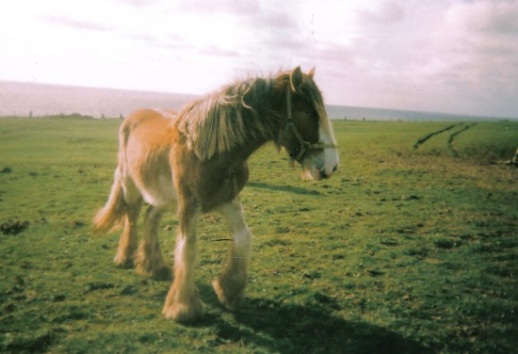We recently opened an email from Amy Liptrot. She told us a bit about her life, now lived just beyond the edge of the mainland. She’d left London to return home to Orkney, where she’s trying to get the big city out of her system. We wanted to know more. This is the first column in an occasional series where she writes about life on a curious island.
In the storms last month, conditions – including hurricane force northerly winds and water-logged earth – were such that sections of dry stone dyke made of huge grey slabs, which had stood through the gales for 150 years, collapsed all over the farm. The morning after one storm, I walked along the shore looking for driftwood or treasure. I found one unusual piece of flotsam – a seal, on the other side of the fence from the sea, perhaps carried by a huge wave. A young straggler, blown off course.
I’ve washed up on this island again, ten months sober, worn down and scrubbed clean like a pebble. Back on the sheep farm where I grew up, on a windswept stretch of land on the west coast of the Orkney mainland, edged with cliffs looking out over the Atlantic. Back home, at the end of a rough year, in the winds that shaped me and where the sea salt left me raw. I’ve got a fresh start but I’m not sure what to use it for, so am going to make myself useful – building walls in the lengthening daylight and staying in a caravan at night. Although well weighted-down, the caravan’s in an exposed location and in the storms the whole place shakes and the windows rattle but I’m safe in the glow of my laptop.
After 54 days when it rained each day, with only eight hours of sunshine in the whole of December, there were some magic days in January: dreamy sunsets reflected on calm water. I walked up to the farm from the beach. Each time I return it gets me. Although the people that live in the farmhouse are no longer my family, I remember what a special place I come from.
Building dry stone dykes is slow work. A dyke is actually two walls, built to be flat on the outside edges, joined at the top by large linking stones and filled in the middle with smaller lose stones. I have a hunch that the parts of the brain used when dry stone dyking are the same parts connected with creativity. It’s no breeze block mindlessness, oh no (although repairing a broken down section is easier than building from nothing): you have to constantly visualise and discriminate. Selecting and estimating the odd shaped stones for shape and size, forming a unique 3D jigsaw to last.
These stones are heavy and ancient, modern technology seems flimsy. I carry a digital camera and a lump hammer. Crouched behind the wall, sheltering from the wind to light a rollie, I watch the sun’s short journey across the sky to the south, over the the open treeless landscape and behind the hills of the island of Hoy before it falls below the Atlantic horizon and I can no longer see my stones. I start to think in decades and centuries rather than days and months. Who were the people that built the original dyke? The farms employed many more people then. How long will my part remain?
In the fading light the farm is timeless and two huge horses appear like time travellers out of the mist. When I was a kid, there were bones of working horses down by the shore, left where they were shot by farmers forced to replace them by tractors. Now, like in this poem by Edwin Muir, they have returned.
Just as these islands seem impossible when I’m in London, these days friends online talking about Japanese restaurants and pop up bars and the tube at rush hour seem preposterous. My fingernails are dirty, my skin is salty with sea spray and this wind-tangled hair reminds me of how I was growing up, chasing the dogs under gates.
I try to ignore the part of me that want to devise a practical wall-based philosophy. How you have to break it down before you can build it up; how you have to work with the stones you’ve got; how you can’t spend too long worrying if you’re making the perfect wall, you just have to get on with placing stones. I’m repairing these dykes at the same time as I’m putting myself back together.
Back in the caravan and the weather has turned wild again, the walls are trembling and the wind and hail crashing against the windows, like being at sea.

